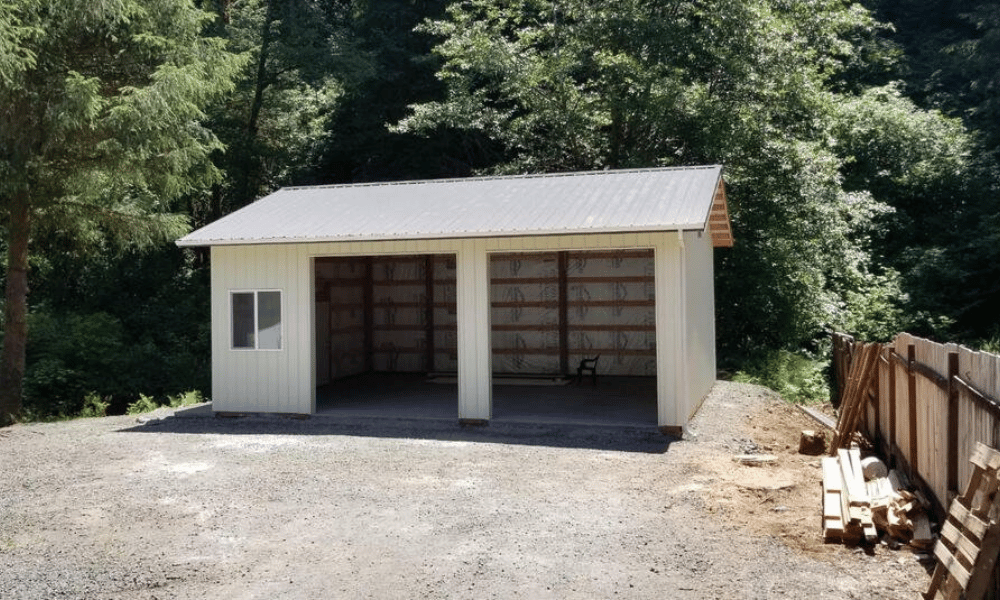Introduction
When it comes to maintaining a comfortable and efficient garage space, homeowners often focus on insulation. While insulation plays a pivotal role in regulating temperature and protecting the integrity of your garage, one crucial element tends to get overlooked: weather stripping. In this comprehensive article, we explore why weather stripping is just as important as insulation in garages, particularly for those who own a pole barn garage. Understanding the significance of both elements can lead to enhanced energy efficiency, reduced utility bills, and an overall more pleasant environment.
Understanding Weather Stripping
What is Weather Stripping?
Weather stripping is a material used to seal gaps around doors and windows, preventing air leaks that can lead to drafts and energy loss. It comes in various materials such as rubber, foam, vinyl, or metal, each offering different levels of durability and effectiveness.
Types of Weather Stripping Materials
Foam Tape: This is easy to apply and ideal for irregular surfaces. V-Seal: A long-lasting option that fits tightly against the door or window. Rubber: Provides excellent insulation against moisture and air. Metal: Often used in high-traffic areas due to its durability.The Importance of Insulation in Garages
Why Insulate Your Garage?
Insulation helps maintain stable temperatures within your garage by resisting heat transfer. This is vital if you use your garage for activities like woodworking or automotive work.
Different Types of Garage Insulation
Fiberglass Batts: Cost-effective but requires careful installation. Spray Foam: Offers superior air sealing but can be more expensive. Rigid Foam Board: Provides excellent thermal resistance.Why Weather Stripping is Just as Important as Insulation in Garages
You might wonder why you should invest time and money into weather stripping if you've already insulated your garage effectively. The answer lies in the fact that even the best insulation cannot perform optimally if there are gaps allowing air leaks to enter or escape.
The Role of Weather Stripping
- Energy Efficiency: Proper weather stripping reduces reliance on heating and cooling systems, leading to lower energy bills. Comfort: A well-sealed garage minimizes drafts, making it a comfortable workspace. Protection Against Moisture: Seals prevent rainwater from seeping in, protecting tools and materials from rust or rot.
Common Areas for Weather Stripping Installation
Garage Doors
The most significant source of air leaks often comes from the garage door itself. Installing weather stripping along the edges will create a tight seal when closed.
Windows
If your garage has windows (especially in a pole barn garage), these are also common leak points where proper weather stripping can make a difference.
Side Entrance Doors
Often overlooked, side doors require just as much attention when it comes to sealing gaps.
DIY vs Professional Installation
Should You Install Weather Stripping Yourself?
For many homeowners, installing weather stripping can be an achievable DIY task. However, it's essential to ensure you choose the right type for your specific needs.
When to Hire a Professional
If you're unsure about how to measure or install effectively—or if you have unique architectural elements—hiring a professional may save you time and ensure optimal results.

Maintenance Tips for Weather Stripping
Regular Inspection: Check annually for wear and tear. Cleaning: Keep the surfaces clean before applying new strips. Seasonal Adjustments: Reassess after extreme weather changes; adjustments may be necessary.How Does Weather Stripping Affect Energy Bills?
A well-insulated garage with effective weather stripping can significantly reduce heating and cooling costs by ensuring that temperature-controlled air remains inside while keeping outside conditions at bay.
FAQs
1. What are the main benefits of weather stripping?
Weather stripping enhances energy efficiency by reducing drafts while maintaining comfort levels within the space.
2. How often should I replace my weather stripping?
It’s advisable to inspect your weather stripping annually; however, it may need replacing sooner depending on wear due to environmental factors.
3. Can I use any type of weather stripping for my pole barn garage?
Not all types are suitable; consider selecting materials that withstand outdoor conditions effectively if dealing with a pole barn structure.
4. How do I know if my garage needs better insulation or weather sealing?
If you experience drafts or fluctuating temperatures despite having insulation installed, it’s likely that gaps exist which could be sealed with weather stripping.
5. Is installing weather stripping cost-effective?
Yes! The initial investment quickly pays off through savings on energy Eugene pole barn garage contractors bills while providing added comfort in your space.
6. Can poor sealing cause damage over time?
Absolutely! Moisture entry due to insufficient sealing can lead to mold growth or structural damage over time.
Conclusion
In summary, while insulation plays an integral role in maintaining temperature control within garages—including pole barn garages—weather stripping serves as an equally essential component that should not be neglected. By understanding why weather stripping is just as important as insulation in garages, homeowners can take proactive measures toward creating an efficient workspace that minimizes discomfort and maximizes protection against external elements.
By integrating both quality insulation and effective weather-stripping techniques into your garage design or renovation plan, you'll ensure a safer environment that stands up against Mother Nature's whims while keeping those pesky energy bills at bay!